We may earn revenue from the products available on this page and participate in affiliate programs. Learn more ›
_
Choosing the best whitetail cartridges is actually pretty easy because there are so many great ones to choose from. Getting another hunter to agree with your choice is the hard part. Deer hunters debate minute differences in feet per second, pounds of energy, and bullet diameter as hotly as if they were deciding the presidential election.
However, few hunters have a lot of experience shooting a lot of deer with a lot of different cartridges. More likely, they shot a deer with a certain cartridge, and the deer might have run more than 100 yards (which they sometimes do no matter what they’re shot with) and just like that, it’s the worst whitetail cartridge ever. Or maybe a hunter takes several deer with wonderful results using a single cartridge—which, naturally, becomes the best whitetail cartridge of all time.
Maybe you favor one over all the others because it’s what your dad used or it’s what you shot your first buck with. Nothing wrong with that. Hunting is an emotional and personal thing, and cartridge choice is one-way hunters personalize whitetail deer hunting. The good news is that deer are not hard to kill, and a lot of cartridges will work, no matter who likes them or doesn’t. Truth is, it’s hard to choose the wrong whitetail cartridge if you consider what matters.
Things to Consider When Choosing the Best Whitetail Cartridge
Arguments around the best cartridge for whitetail deer generally focus on things like the best deer hunting caliber, or bullet weight, velocity, and energy. Often, ballistic coefficient and sectional density enter the discussion. Here’s what I think matters and what doesn’t.
Caliber
To be clear, the best deer hunting caliber and the best cartridge are not the same thing. Caliber describes the diameter of a cartridge’s unfired bullet. Which caliber is best for deer? All of them. Or none of them. Why? Because it’s not the diameter of the unfired bullet that matters; it is the diameter of the deformed bullet that makes the hole through the vitals that’s important.
Bullet Weight
It’s long been thought heavy bullets kill better. This is a carry-over from back when bullets were fragile things that could not survive fast impact velocities. Heavy bullets went slower, held together better, and penetrated deeper. How much does a bullet need to weigh to kill a deer? Just enough to penetrate deeply enough to get the job done. Once a bullet achieves adequate penetration, bullet weight—initial or recovered—matters not.
Velocity
Velocity does matter. It’s the difference between a 300 Savage and a 300 Winchester Magnum. But what matters most about velocity is that there’s enough of it to make the bullet fully deform after impact, and then enough remaining velocity to push the bullet as deep as it needs to go. If that happens in the right spot, the deer is dead. What you get with more velocity is more reach at long ranges and more meat ruined at close range.
Read Next: Think That Bullet Velocity Doesn’t Matter? Think Again
Energy
All my life I’ve heard you need 1,000 foot-pounds of energy to kill a deer. I’m not sure what clown come up with this number or how he calculated it. But without consideration for the terminal performance of the bullet, energy means very little. More is better, but only if it is transferred to the deer as opposed to being lost in the dirt on the other side. I’ve cleanly taken deer with handgun cartridges impacting with less than 400 foot-pounds of kinetic energy.
What Matters Most?
Shot placement and terminal performance matter most. If you place a bullet so it will pass all the way through the lungs and/or heart of a deer, and if that bullet deforms to about 1.5 times its original diameter (regardless of caliber), you’ll be a happy hunter. Depending on the angle of the shot, you’ll need between about 12 to 24 inches of penetration. For a perfectly broadside deer, aim in line with the front leg, a third of the way up the body. Shots from any other angle should intersect the same center point of the body this broadside shot would. And now that we know what really matters, here's the list.
The 11 Best Whitetail Cartridges
Let’s be clear here: This is not a list of the 11 best all-around whitetail cartridges. This is a list of 11 of the best whitetail cartridges, matched to specific hunting conditions, and shot distances. They’ll all work wonderfully well if you use them within their limitations and put the bullet where it is supposed to go. On the other hand, you can’t do one of these stories without picking an overall best, and so I have, at the end. But let’s start at close range.
The Best Short-Range and Woods Whitetail Cartridges

If you hunt in the timber or where the longest shot you might take will be no further than 200 yards, just about any centerfire rifle cartridge will work. Some believe that large-caliber cartridges will work better through brush, but there’s really no truth to this. Brush-buster cartridges are mostly just short-range cartridges, and a lot of short-range cartridges use big, heavy bullets. These four cartridges are ideal for deer inside 200 yards.
1) The 223 Remington

Though many hunters believe the 223 Remington is illegal for deer hunting in most states, 36 out of 50 currently allow it. Many also believe the 223 Remington is not enough for deer. Those folks either don’t understand terminal ballistics or have never shot a deer with a 223 Remington in the right spot while using the right bullet. It’s true that most factory 223 loads are not suitable for big-game hunting, but a good handful are, at least out to around 200 yards. Much beyond that distance, the 223 Remington runs out of steam, quickly. Using various 223 Remington rifles, I’ve taken whitetails with the Winchester Power Point, Nosler Partition, Barnes Triple Shock, and Federal Fusion bullets.
Because of its light recoil, this cartridge is easy to shoot accurately, for both young and experienced hunters. Introduced in the mid-1960s with a 55-grain bullet and a slow-twist barrel, the 223 was hardly a deer rifle. Today, with modern ammunition loaded with heavier and stouter bullets, and with rifles with fast-twist barrels, the complexion of the 223 has utterly changed. It is indeed a deer killer, and a fine whitetail cartridge within its limitations.
Pros:
Light recoil makes it perfect for anyone, but especially younger or smaller shooters
AR15 compatible
As long as you choose the right load, especially the right bullet, it has plenty of steam for whitetail deer
Cons:
If you pick the wrong load or bullet, you’ll probably be under-gunned
Some of the best deer bullets require a fast twist barrel
Recommended Load: Federal 62-grain Fusion
Muzzle Velocity: 3000 fps
Muzzle Energy: 1239 ft.lbs
Why It's Our Pick: This load offers the optimal balance of penetration and bullet upset for deer at 223 Remington velocities. It will deform with a frontal diameter nearly twice as large as the bullet’s unfired diameter, and since the bullet’s copper jacket is electro-chemically bonded to the bullet’s core, the bullet will remain intact even if it encounters bone. This bonding also allows the bullet to retain weight—which is critical with lightweight big-game bullets—so that it can penetrate deeply. You don’t need a fast-twist barrel for this load to shoot accurately, and this Fusion load has proven to shoot with great precision in a lot of different 223 Remington rifles.
2) The 30-30 Winchester

Like a lot of hunters, I used to think of the 30-30 as an antiquated, novice-only rifle; my first lever-gun was the much more powerful 307 Winchester. But we learn as we go, and I finally realized that when it comes to killing deer, within its limitations, few cartridges are the 30-30’s equal. This is partly due to wonderfully designed bullets optimized for 30-30 velocities, partly due to the 30-30’s light recoil, but maybe mostly because 30-30s come in fast handling and lightweight lever guns. I learned my 30-30 lesson on a West Virginia whitetail buck that must have not gotten the memo about the 30-30 being obsolete.
Because of the 30-30’s moderate velocity, bullets are never overstressed; they generally open wide and retain enough weight for deep penetration. This is the ideal combination for deer. After nearly 130 years since the 30-30 debuted, other lever-gun cartridges like the 7×30 Waters, 307 and 356 Winchester, and 308 Marlin Express have come and gone, but the 30-30 remains. Not just because it’s a classic, not because it has some sort of cowboy connection, but because it kills deer graveyard dead. North, south, east, or west, when the action is up close, you can’t go wrong with a 30-30.
Pros:
Light recoil makes it easy and fun to shoot for just about any deer hunter
Lots of ammo to choose from
Widely available
Cons:
The 30-30 has become mostly a lever-gun only option
Recommended Load: Winchester 150-grain Power Point
Muzzle Velocity: 2390 fps
Muzzle Energy: 1902 ft.lbs
Why It's Our Pick: If classic 30-30 Winchester terminal performance is what you’re looking for, this load will deliver. Years and years of engineering has allowed Winchester to optimally tune the 150-grain Power Point bullet to deliver ideal terminal performance at practical 30-30 Winchester impact velocities. This bullet will upset with a large frontal diameter out to 200 yards, but it will also hold together well enough to shoot plumb through a whitetail buck when he is only 25 yards away from you in your tree stand. If you just can’t find the 150-grain Power Point load for your 30-30, get the 150-grain Core-Lokt load from Remington. It’s just as good.
Read Next: The 8 Best Lever Action Rifles Ever Made
3) The 35 Remington
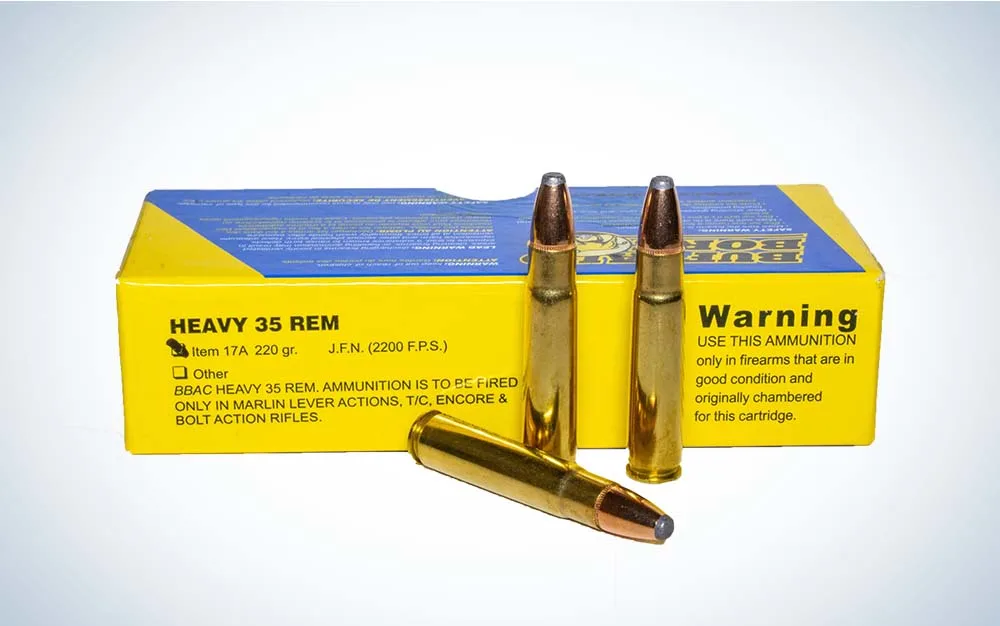
The 35 Remington gained its fame in the Marlin 336 lever gun. However, the cartridge was designed in 1906 for Remington’s Model 8 semi-automatic rifle. Most factory loads push a 200-grain bullet to about 2000 fps. Arguably, this is no better, ballistically, than the 30-30 Winchester, but the debate about which of the two is the best lever-gun cartridge for deer has raged for nearly a century. With Marlin in the process of rebuilding under Ruger, currently the only new 35 Remington available is from Henry and with Remington’s introduction of the straightwall 360 Buckhammer, we may never see a new Marlin in 35 Remington.
However, when it comes to being passionate about deer cartridges, I may be more passionate about the 35 Remington than any other. I’ve had several—lever guns and bolt actions—and have put down a lot of deer with both. Is it any better than a 30-30 Winchester? I can’t prove it, but I believe it. And sometimes believing is all that matters. The 35 Remington is an Appalachian and North Country favorite; some hunters trust it more than they do their grandma. Unfortunately, there are only about five factory loads to choose from, but they’re all perfect for deer. Wouldn’t a new semi-auto 35 Remington similar to Ruger’s discontinued Deer Stalker carbine be a wonder whitetail rifle? A deer thicket would never be the same.
Pros:
Moderate recoil
Widely trusted as a big-woods stopper
Chambered in fast-handling lever guns as well as a number of used semi-autos and pump rifles
Cons:
Limited rifle options, especially in new guns
Recommended Load: Buffalo Bore 220-grain Jacketed Flat Nose
Muzzle Velocity: 2200 fps
Muzzle Energy: 2364 ft.lbs
Why It's Our Pick: With common factory loads there may be some argument about the 35 Remington being no better than the 30-30 Winchester, but when you throw this load into the mix there’s nothing left to argue about. The Buffalo Bore load pushes a bullet that’s 20-gains heavier and 200 fps faster than any of the 200-grain 35 Remington loads and it will also shoot flatter and hit about 20% harder than anything the 30-30 Winchester can throw. If you like exit wounds, this bullet should deliver them, and if you want to go after elk with your 35 Remington, this load will work for that as well. Be advised, with all that extra power comes a bit more recoil.
4) The 45-70 Government
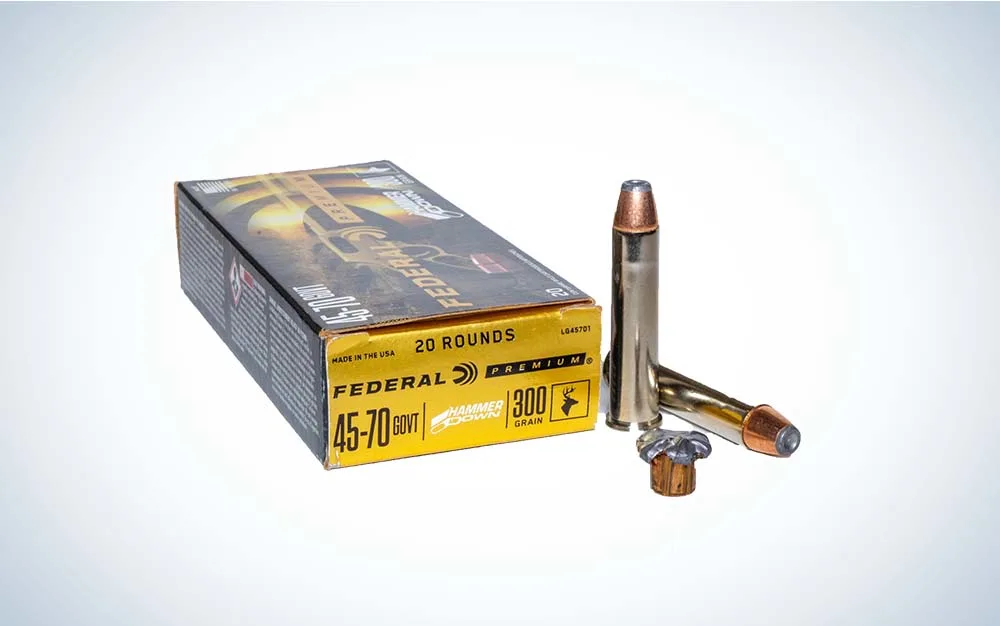
Introduced in 1873, the same year that Colt released their Single Action Revolver, it seems like the 45-70 has been around forever. As popular as it is today, by the 1970s it was almost extinct. However, with Marlin’s reintroduction of the Model 1895, the 45-70 found new life. More importantly, it found new ammo. Up until that time, 45-70 loads were weak with rainbow trajectories. With modern ammo, the 45-70 differs from a lot of other cartridges because it has a three-tiered power level. Original patterned loads launch a 405-grain bullet at about 1200 fps. Mid-range loads will push a 300-grain bullet past 1800 fps. And top-tier loads will match that velocity with a 430-grain bullet. As a result, a 45-70 will work for anything walking Earth now and maybe ever.
But you don’t need magnum-like 45-70 loads to kill deer. The mid-level stuff is ideal, and the recoil is perfectly manageable. The 45-70 makes a big hole going in, a bigger hole through the middle, and leaves a gaping exit. It’s a straightwall-legal cartridge, and there’s a host of really nice rifles to choose from. All the deer I’ve shot with the .45-70 acted like the Lord had just called them home.
Pros:
Variable powered ammunition
Legal in states that require straight-wall cartridges for deer hunting
Hits very hard
Cons:
The best .45-70 deer loads have a punch on both ends, but recoil is manageable for experienced shooters
This is not a flat shooting cartridge
Recommended Load: Federal 300-grain HammerDown
Muzzle Velocity: 1850 fps
Muzzle Energy: 2280 ft.lbs
Why It's Our Pick: This is a second-tier .45-70 load that’s suitable for all big-game animals. It will not have a problem with any deer, no matter how big you grow them in your state. Like all HammerDown loads, Federal has optimized the 45-70 HammerDown load for lever guns in two ways. First, HammerDown loads have nickel-plated cases with the forward edge of the rim beveled to make loading and cycling smoother. Most importantly, the smart guys at Federal also engineered that big molecularly bonded 300-grain soft point bullet to deliver ideal bullet upset and to retain its weight from the muzzle out to any practical distance you might shoot with a 45-70. But this is not just a load for lever guns, it will work in any 45-70 rifle.
The Best Moderate-Range Whitetail Cartridges
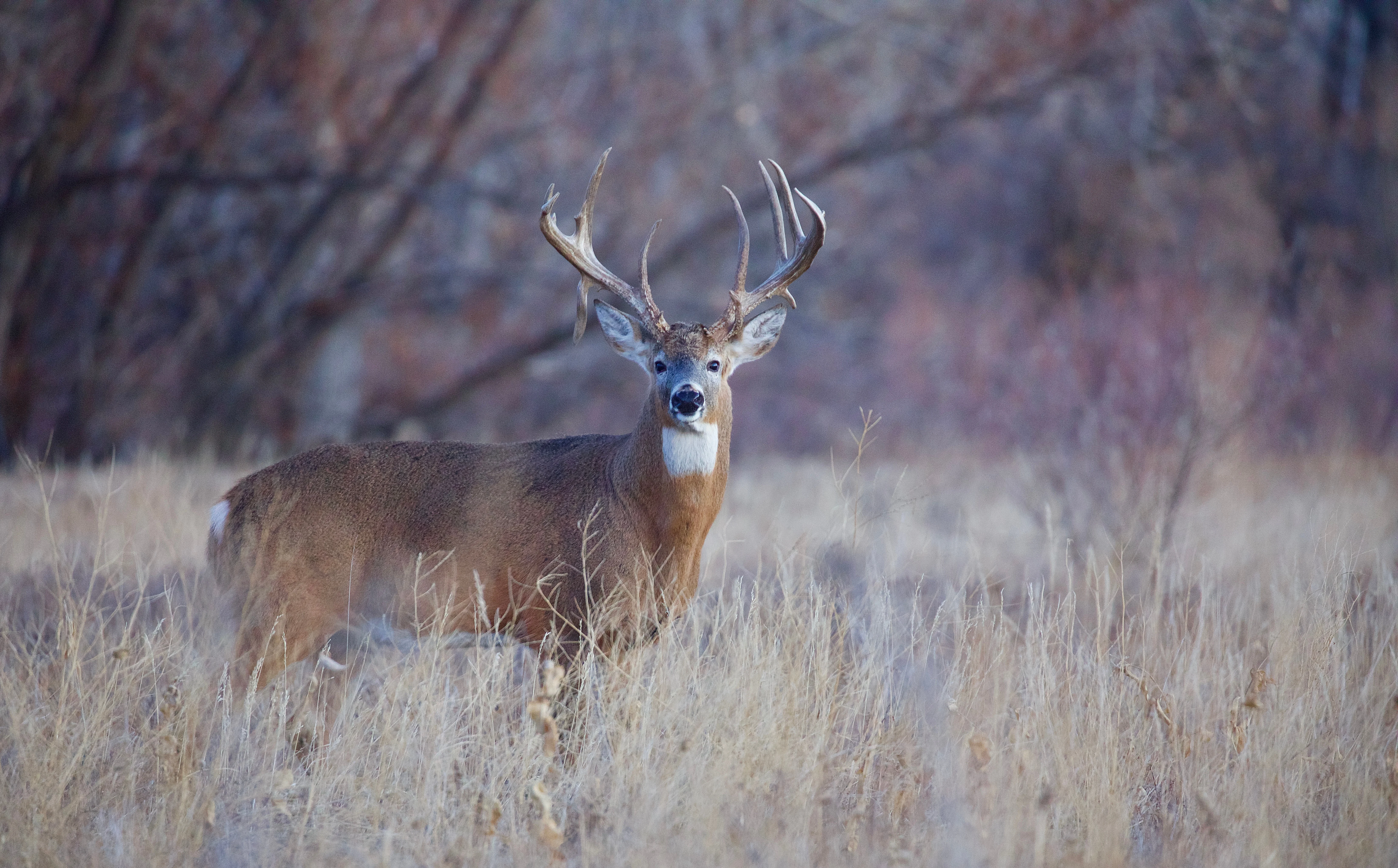
What is moderate range? Well, 50 years ago it was somewhere between 150 and 250 or so yards. With today’s ammunition, excellent factory rifles, and marvelous optics, you could make the case that it’s a bit farther. Exactly how much farther I’m not sure, but it’s probably at least double “short range,” so we’ll just call it between 200 and 400 yards. What you need here is a reasonably flat-shooting cartridge with enough retained velocity to ensure bullet upset. Here are three great options, and they’ll work at short range too.
5) The 243 Winchester
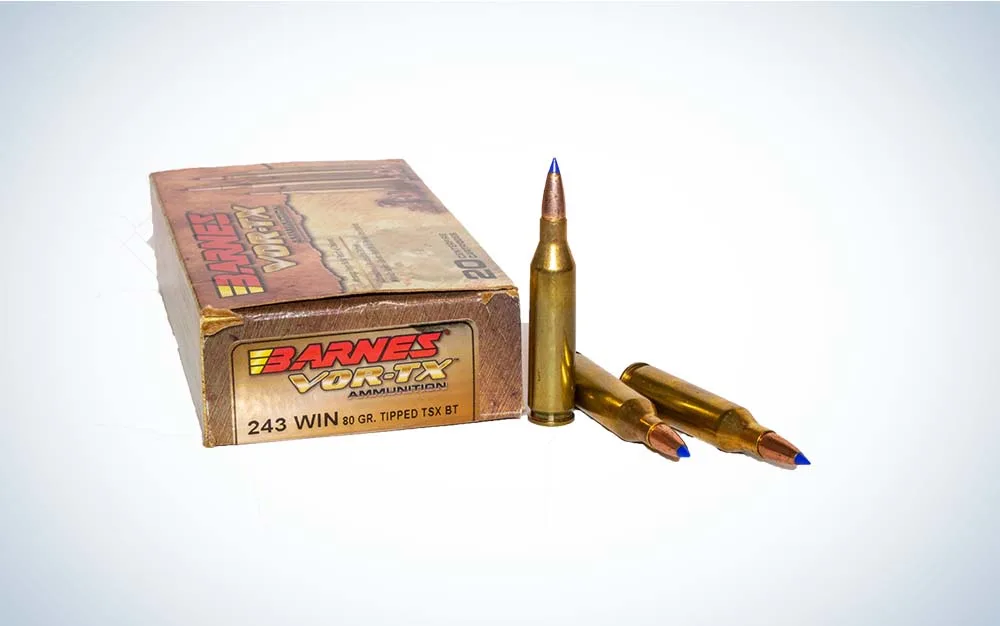
The first deer rifle my father owned was a 243 Winchester. Other hunters in camp armed with 30/06s told him it was not enough gun. Dad proved them wrong. The best shot I ever made on a deer, I made with a 243, on the best deer I’ve ever taken in West Virginia. The 243 Winchester is not my favorite deer cartridge, but it is one I trust completely.
The 243 achieved its early popularity by being suitable for both deer and varmints, and it’s still a great choice for that dual-purpose pursuit. Much like how the 6.5 Creedmoor with its faster twist killed the 260 Remington, the 243, with its fast twist and ability to handle heavier bullets, ended its Remington 6mm counterpart. But that was back in the day. Modern mono-metal bullets thrive on velocity, and an 80-grain all-copper bullet will scream out of a 243 Winchester and seemingly electrocute deer. For those who still believe the 243 is not enough gun for deer, I’ll note that my wife took one to Africa and killed a gemsbok, a wildebeest, and an impala, with one shot each. She’s whacked a few deer with that same rifle, and none of them have attempted to crawl out of the freezer.
Pros:
Light recoil makes it on of the best whitetail cartridges for new hunters or smaller hunters
Does double duty for varmints
Lots of loads to choose from and widely available
Packs plenty of punch for deer with the right bullet
Cons:
Needs a 22-inch barrel to take advantage of velocity potential
Recommended Load: Barnes VorTX 80-grain TTSX BT
Muzzle Velocity: 3350 fps
Muzzle Energy: 1994 ft.lbs
Why It's Our Pick: Possibly because the 243 was initially offered with a 100 grain bullet, which made it more popular than the 6mm Remington, some hunters believe a 243 Winchester used for deer hunting still needs a 100-grain bullet. But 70 years ago, when the 243 Winchester and the 6mm Remington were introduced, we didn’t have an 80-grain bullet like the Barnes TTSX. Light bullets like this 80-grainer exploit the velocity the 243 can deliver, and this TTSX will open wide and penetrate deep, creating massive tissue damage. Placed in the right spot, you will 100% recover your deer, but you’ll be very unlikely to recover the bullet—it’ll pass through the deer and just keep on going.
6) The 257 Roberts
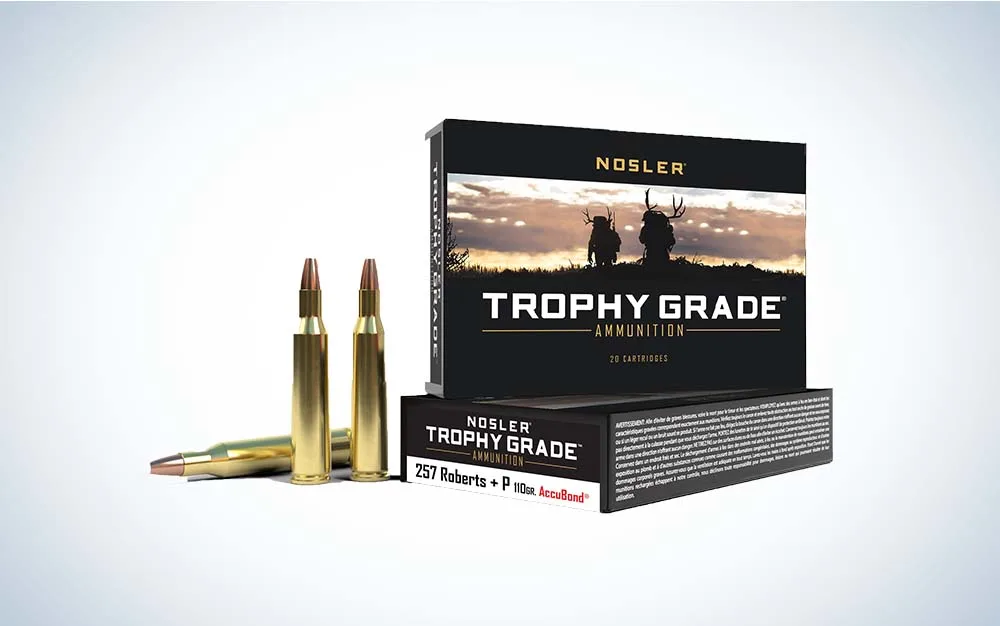
The 257 Roberts was designed about 100 years ago by gun writer Ned Roberts for varmint shooting at long range. Remington legitimized it in 1934, but with an overall length that would allow it to work in short-action rifles. That’s why most factory 257 Roberts ammo looks stubby; bullets are loaded deeply in the long 7X57 Mauser case the Roberts was based on. Remington saw the Roberts for the great deer cartridge it could be and offered it with a 117-grain bullet. But because so many custom Roberts rifles were built on imported military actions of questionable strength, pressures were kept low. Today’s modern +P 257 Roberts ammo, however, is loaded to 58,000 psi.
Though ballistically inferior to the 25-06, the Roberts has hung around, and is still kicking. The “Bob,” as it’s sometimes called, has also been tagged as the perfect deer cartridge, and that might not be far from the truth. I’ve used the Bob to take a lot of deer with a lot of different loads, +P and standard pressure. All those critters died just like they’d been shot with the longer and faster 25-06—but I felt less recoil. The Roberts simply refuses to die, and it just might just live on forever.
Pros:
Light recoil make it easy for anyone to shoot
The 257 Roberts is a handloaders dream cartridge
Cons:
Very few factory loads and rifles
Recommended Load: Nosler Trophy Grade 110-grain AccuBond +P
Muzzle Velocity: 3050 fps
Muzzle Energy: 2272 ft.lbs
Why It's Our Pick: You don’t need a bonded bullet for the 257 Roberts, but this load is laser accurate and performs well at 257 Roberts’ velocity. And because this bullet is bonded, if you strike bone, it will still hold together and penetrate deep. But this bullet also has a ballistic coefficient of 0.418, so with your rifle sighted in at 200 yards the bullet will only drop about 6.5 inches at 300 yards, and it will still be carrying 1500 foot-pounds of kinetic energy out to 800 yards. AccuBond bullets are known for delivering the precision of a Nosler Ballistic Tip with the terminal performance of a Nosler Partition. I’ve killed more big game with an AccuBond than with any other bullet.
7) The 7mm-08 Remington
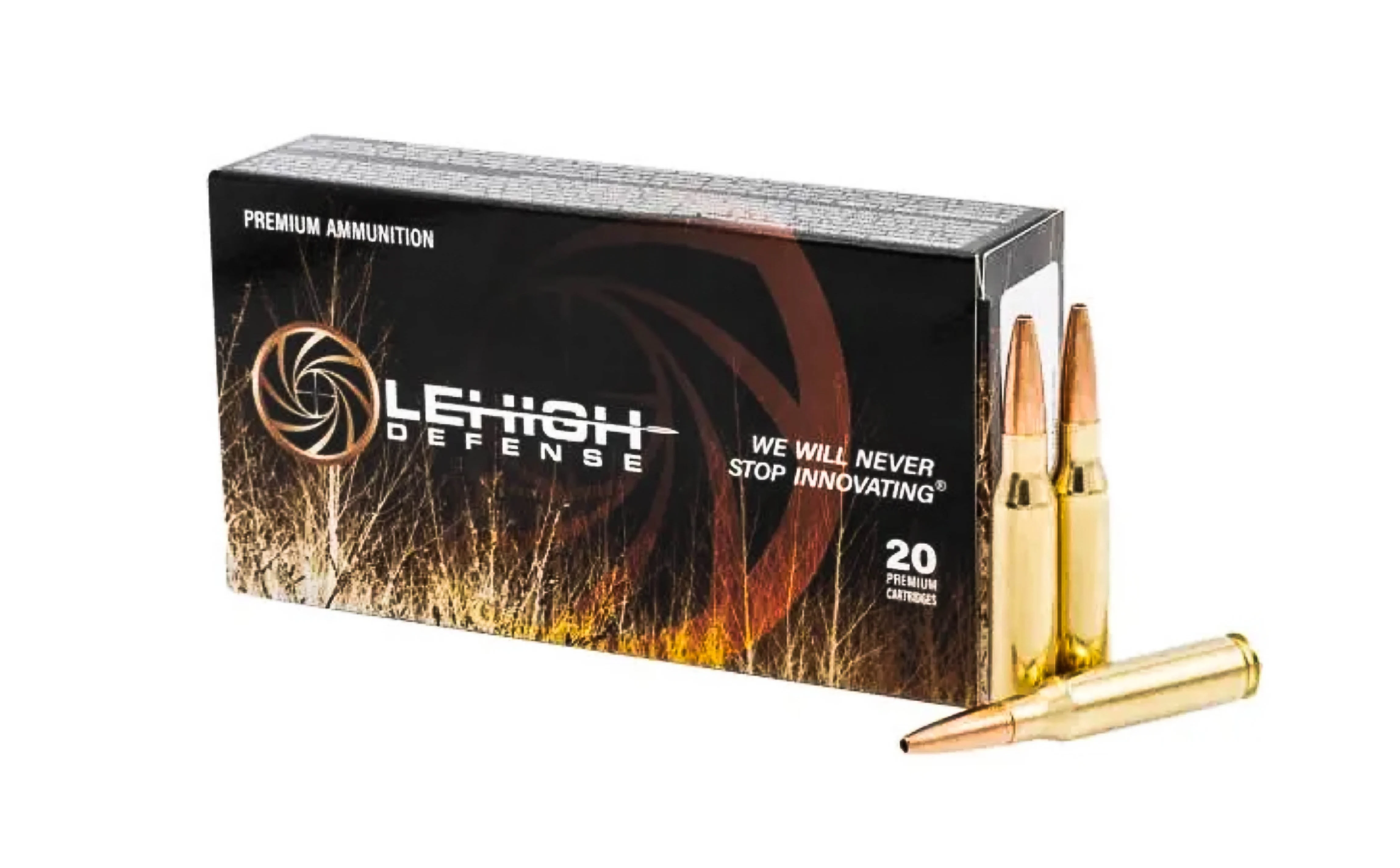
The 7mm-08 is a 308 Winchester case necked down to fit a 0.284-caliber/7.2mm bullet. Though the name suggests it’s a 7mm (7mm = 0.275-inch), unlike most American cartridges, it gets its name from its bore—land to land diameter—as opposed to its bullet diameter. Ballistically, it competes favorably with the 270 and 308, though it never achieved the popularity of either. Because of that, ammo options are not extensive.
I’ve witnessed deer and hogs and even elk taken with the 7mm-08, and I’ve used the 7mm-08 Remington with great success on deer. The cartridge seems to shoot flatter and hit harder than its recoil impulse would suggest, and, with the right bullets, you can stretch the distance a bit beyond moderate range. With the introduction of the 6.5 Creedmoor, interest in the 7mm-08 has waned. Still, many deer hunters swear by it, and Jeff Cooper considered it the best alternate cartridge to the 308 Winchester for his Scout Rifle. If you’re a fan of heavier bullets than the Creed can launch, but still want flat trajectory with comparable recoil, the 7mm-08 might be just right for you.
Pros:
So ballistically balanced that it has to be considered one of the best all-around whitetail cartridges ever
Moderate recoil is more than manageable for experienced shooters
Cons:
Limited ammunition options
Waning popularity means fewer rifles are being chambered for it
Recommended Load: Lehigh Defense 142-grain Controlled Chaos
Muzzle Velocity: 2685 fps
Muzzle Energy: 2273 ft.lbs
Why It's Our Pick: The bullet for this load does not have an extremely high ballistic coefficient, but based on how it performed for me on a big Texas whitetail and for my wife on a lot of larger big game animals in Africa, I think this is one of the most lethal cartridge/bullet combinations I’ve ever seen. The front of the Controlled Chaos bullet separates into four petals that radiate outward from the path of the bullet shank which penetrates extremely deep and almost always exits. Those four petals radically enhance wounding, and, in some case, they can make up for a shot that is just a little wide of the mark. Also, like with all the precision machined Lehigh bullets, you can expect tack-driving precision.
The Best Long-Range and Open-Country Whitetail Cartridges

I believe there are very few excuses for shooting a deer at long range, and I much prefer to hunt with my feet as opposed to feet-per-second. However, in this modern world, I might be in the minority. Anything beyond where you must hold off the animal to get the hit is for-sure long range. That distance, of course, varies with the cartridge and your zero, so for simplicities sake we’ll just call it anything past 400 yards, which by the way, is a damned long way. For this, you need high-BC bullets, high velocity, or both. Here are three cartridges that will get it done at any distance from the muzzle out past what’s too far to be shooting at deer anyway.
8) The 6.5 Creedmoor
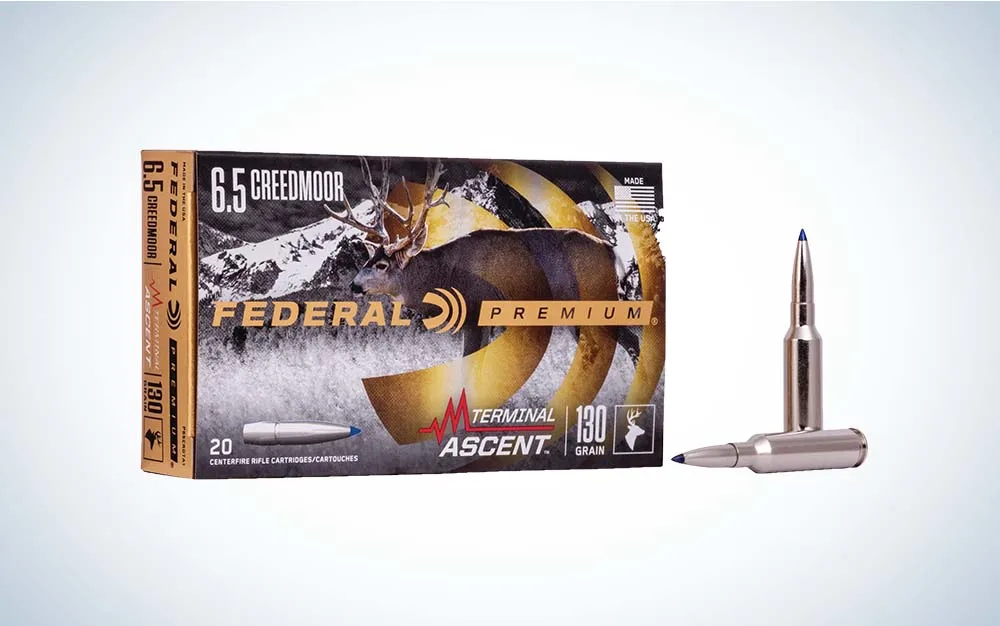
There’s no other cartridge as hated or loved as the 6.5 Creedmoor. Modern shooters adore it because it shoots flat and does not cross your eyes every time you pull the trigger. Old timers despise it for the same reason; they think that kind of performance only comes with recoil to match. The Creed recoils about 40 percent less than the 30/06, which makes it easy to shoot with precision. And because of its immense popularity, there are lots of rifles and loads to choose from.
My son became a Creedmoor fan in Africa and has since gone six-for-six with it on deer. I’ve used it in Africa, Mexico, and Canada, on game as small as Coues deer and as large as moose. I think it works best on critters weighing less than 500 pounds, which is about twice the weight of even the biggest deer. Inside 400 yards, bullet choice is not that critical and at those distances the Creed is no better than its 260 Remington rival. Beyond that distance, you’ll need a bullet with a BC of more than 0.500 to get the most of what the Creed can offer. Fortunately, 6.5 Creedmoor rifles have the correct twist rate to stabilize those long and slender 6.5mm bullets.
Pros:
Great recoil-to-performance balance
More than enough thump for deer hunting
Flat-shooting at long range with high-BC bullets
Lots of loads and rifles to choose from
Cons:
Not as magical as everyone thinks
Recommended Load: Federal 130-grain Terminal Ascent
Muzzle Velocity: 2825 fps
Muzzle Energy: 2303 ft.lbs
Summary: If you do not use a high-BC bullet in the 6.5 Creedmoor, it offers no advantage over similar cartridges. This bullet has a BC of 0.532 to help the Creed go the distance. That means with a 100 yard zero, 500 yards is only an 8 MOA correction away. And, because of the high BC, this bullet will remain supersonic out to distances where you could not hit a deer even if you had a box of ammo to shoot at it. The real thing that sets this bullet apart is its ability to still upset and deliver good terminal performance at low impact velocities. And with its core bonded to its jacket this bullet will hold together if a close range shot smacks bone. This makes this load a good choice for hunters who plan to shoot at deer that are way the hell out there but want to be prepared for one at any distance.
9) The 270 Winchester

The very first deer rifle I called my own was a 270 Winchester. I wanted a 264 Winchester Mangum but could not find one, so settled for what I thought was the next best thing. I killed my first—and a lot more—deer with that 270, using a lot of common bullets like Core-Lokts and Power Points. I never lost one, and they never ran far. Jack O’Connor was tremendously fond of the 270 and he is thought to be largely responsible for the cartridge’s popularity.
The truth is, the 270 didn’t need O’Connor. Its claim to fame at introduction, which was almost 100 years ago, was that it shot flatter than the 30-06 and it still does. Because you don’t need a lot of gunpowder to kill deer, the 270 is one of only two long-action cartridges on this list. It’s typically loaded with 100- to 150-grain bullets, but the mid-range bullet weights are optimum, and there’s lots of loads with those bullet weights to choose from. The 270 Winchester will always be a favorite, but I’ve left it for shorter cartridges that work in more compact actions with less recoil and never looked back. Still, though O’Connor was not right about everything, he was right about the 270 Winchester.
Pros:
Moderate recoil for how fast and flat-shooting it is
Lots of ammo and rifles to choose from
Cons:
It’s a long-action cartridge that performs best with a 22-inch or longer barrel
Recommended Load: Hornady 145-grain Precision Hunter ELD-X
Muzzle Velocity: 2970 fps
Muzzle Energy: 2840 ft.lbs
Why It's Our Pick: For distance kills, you need a high-BC bullet to get there quickly, but also a bullet that will deform at long range impact velocities. This load does both and does it as good or better than most 6.5 Creedmoor loads. Where the Creedmoor relies mostly on high BC bullets, in the 270 Winchester this load has both a high BC and good velocity. Additionally, the ELD-X bullet from Hornady is one of the best bullets when it comes to working at slow impact velocities, which means it will still upset for good tissue destruction at extreme range. But these bullets also hold together well enough to withstand up close impacts on deer as well.
10) The 7mm Remington Magnum
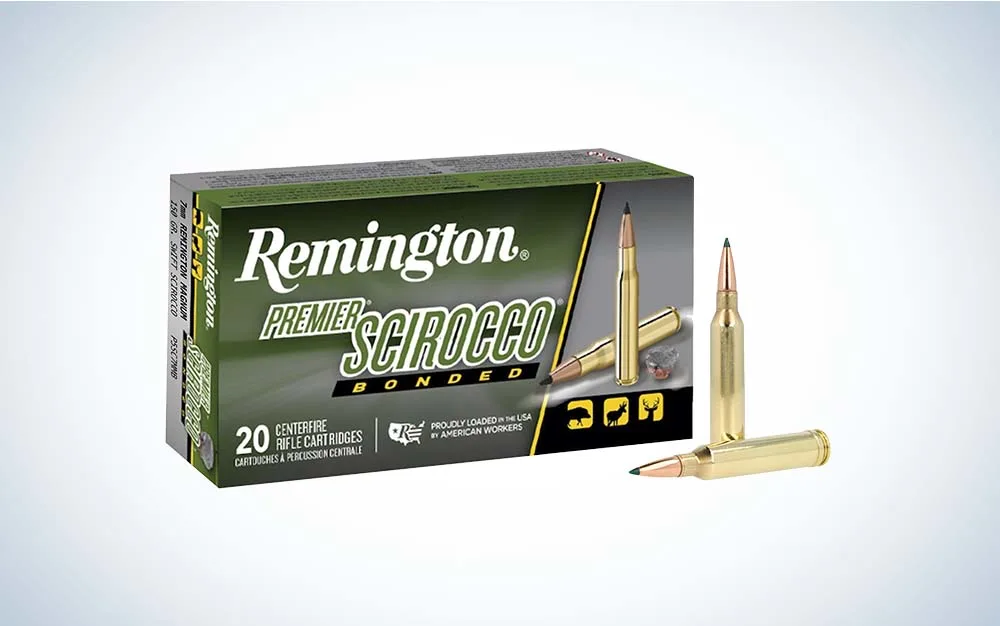
With its ability to shoot flat and handle heavier bullets, the 7mm Magnum is the cartridge that killed the 264 Winchester Magnum and I’ll never forgive it for that. Even with the bullets of the ’60s and ’70s, it became a very popular deer and big-game cartridge. With the best bullets offered today, the Seven-Mag is one of flattest shooting centerfire rifle cartridges available, especially if you don’t want to think a mule has kicked you every time you pull the trigger.
I grew up watching my cousin slay deer with his Seven-Mag. I’ve used it to kill steel at stupid-long distances and to take a big-bodied Saskatchewan whitetail. There are lots of great long-range deer cartridges, but if you want to hit them hard without having your noggin rattled, few can do it as well. Warren Page was a staunch supporter of the Seven Mag. I don’t love it quite so much, but if I wanted to reach into the next county or the next week to smack the rut out of a big whitetail or muley buck, it’s probably what I’d use.
Pros:
Extremely flat shooting
Deer hunters swear by it, which counts for something
Cons:
Lots of noise and muzzle blast
Recommended Load: Remington 150-grain Scirocco Bonded
Muzzle Velocity: 3110 fps
Muzzle Energy: 3222 ft.lbs
Why It's Our Pick: This load gives you a high-BC bullet to go the distance and a bonded bullet to withstand 7mm Magnum impact velocities up close. And it’s been the up close shots that have caused some hunters to swear off the 7mm Mangum. Conventional cup and core bullets launched at 7mm Remington Magnum velocities can turn deer meat into hamburger at close range. And while tissue damage is the key to killing, it also limits the amount of meat that makes it to your freezer. You don’t need a bonded bullet to kill a deer but with the Seven-Mag it’s not a bad idea because it will hold together and not grind up all that good eating. And too, with a high BC of 0.533, combined with a muzzle velocity of more than 3100 fps, this load will reach way the hell out there and make you forget the 6.5 Creedmoor.
Read Next: The Most Influential Rifle Cartridges Ever Made
The No. 1 Best All-Round Whitetail Cartridge
There isn’t one best cartridge for deer hunting. That’s why I categorized this roundup the way I did. However, if forced, I can name the one cartridge that will work very well in the most varied conditions and for the most varied types of shooters. It’s a cartridge that works very well up close and far away. It’s ammo is easy to find in lots of styles. And boatloads of deer rifles are still chambered for it. So, what do I believe is the No. 1 do-everything deer medicine, the all-around single best whitetail cartridge, period?
11) The 308 Winchester
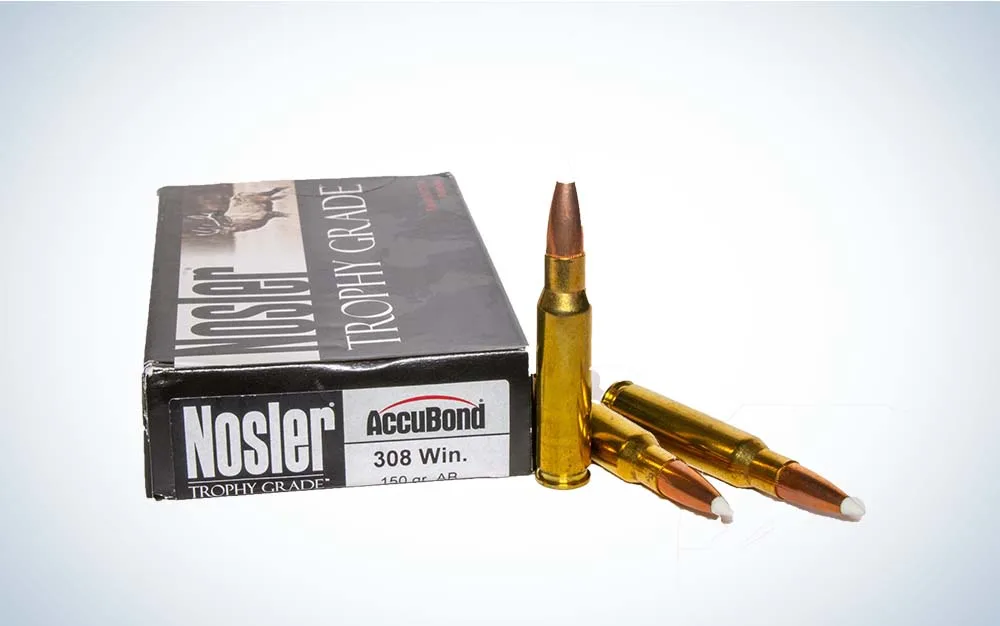
There’s nothing sexy or exciting about the 308 Winchester. It’s doesn’t deliver sizzling velocities or hit extremely hard, and it’s as common as bad breath. But what the 308 Winchester does a really good job of is killing deer. It offers a wonderful balance of velocity, energy, trajectory, and recoil, and the selection of factory loads is diverse in bullet weight, type, and ballistic coefficient. There are even several low-recoil options for youths or new hunters, and it has a reputation for extreme precision.
There are lots of 308 rifles to choose from, too. Ammunition selection is not that critical either; soft-point, round-nose, bonded, mono-metal, or light or heavy bullets, it really does not matter with the 308 Winchester for most deer hunting applications. Pick a load you and your rifle like and go kill deer. I took one of my best West Virginia whitetails at about 60 yards with the 308 using a 180-grain Remington round-nose Core-Lokt.
In the 50s, the 308 unseated the 30/06 as America’s military cartridge. Now, more than a half-century later, it’s mostly done the same with America’s deer hunters. I’ve used it extensively but have zero emotional attachment to it; it’s austerity offers little charm. The damned thing just works.
Pros:
Moderate recoil given it’s downrange performance
Best and most diverse ammo selection
Cons:
Hard to think of any
Recommended Load: Nosler Trophy Grade 150-grain AccuBond
Muzzle Velocity: 2875 fps
Muzzle Energy: 2752 ft.lbs
Why It's Our Pick: This load exceeds original 30-06 velocities and offers what is likely the best balance of external and terminal performance the 308 Winchester can offer. It shoots flat enough for any reasonable shot at a whitetail deer, hits hard enough for just about every big-game animal, and recoil is more than manageable. One great thing about the AccuBond bullet is that it is bonded, which means it will hold together even if heavy bone is hit. The second is that AccuBonds tend to shoot with great precision. Lots of old timers like heavy-for-caliber bullets, but when it comes to deer a 150-grain bonded bullet from a 308 Winchester is what might be called the perfect combination. Expect pass throughs on broadside shots and you’ll have to shoot your buck lengthwise for it to stop this bullet.
What? No .30/06?!
That’s right. Get out your pitchforks. I left out the 30/06 and a lot of other good cartridges because they don’t do anything better than the cartridges already on the list. Why not the 25-06? Because the 270 Winchester is better. What about the 260 Remington? Like the 30/06, it’s a fantastic deer killer, but with more loads in 6.5 Creedmoor, why bother? Why not the 280 Remington and 30/06? Neither will kill a deer any deader, reach any farther, hit any harder, or shoot any flatter than the 7mm Remington Magnum, and well, there’s always the 270 Winchester. As far as the .300 Winchester Magnum, if you’re that mad at the deer, get a Weatherby 338-378. It’ll pulverize deer and rattle forgotten lessons free from your brain, like the lesson you must have forgotten about shooting hard-kicking guns when you don’t need to.
I also left off all the Weatherby and Nosler cartridges because of rifle and ammunition availability. Two of my favorites, the 30 Remington AR and my wildcat 2Fity-Hillbilly, are not on the list for those same reasons. You’ll also not see any short magnums, because no one gives a rat’s ass about short magnums anymore. And yeah, there’s some great AR-15 cartridges missing too. If I could add one more, I think answering the question of, What would the number 12 cartridge on this list be? might be as difficult as choosing the first 11.
What Really Kills Deer

It’s fun to argue whitetail cartridges, and it’s smart to buy a gun chambered for a good one. But what really kills deer is a good shot made with a good bullet. The numbers and letters impressed in the headstamp of cartridge cases are there to make sure you get the right ammo in the right gun, not to impress your hunting buddies or to convince the deer to die faster.
So, debate all you like. That’s what deer camp is for. But before the deer season, spend as much time as you can becoming a better marksman. Find the cartridge you like the best, learn its and your limitations, and it’ll be the best deer killer for you, in the timber and at the campfire. But rest assured, someone will be there to argue that fact, and they’ll probably be just as right and wrong as you are.






